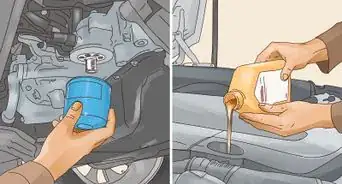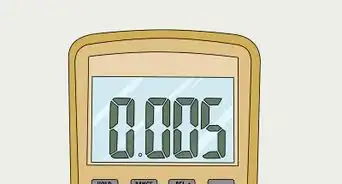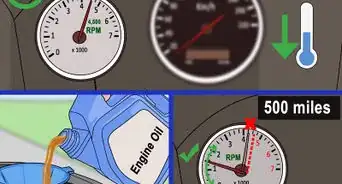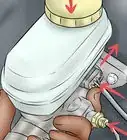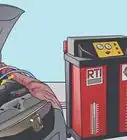This article was co-authored by Hovig Manouchekian. Hovig Manouchekian is an Auto Repair and Design Specialist and the Manager of Funk Brothers Auto, a family-owned business operated since 1925. With over 30 years of experience in the automotive industry, Hovig specializes in the process of auto repair and maintenance. He is also very knowledgeable in common automotive issues and needs including engine repair, battery replacement, and windshield accessory and maintenance. Hovig's knowledge and hard work have contributed to Funk Brothers Auto winning Angie's List Super Service Award for five consecutive years.
wikiHow marks an article as reader-approved once it receives enough positive feedback. This article has 25 testimonials from our readers, earning it our reader-approved status.
This article has been viewed 1,137,924 times.
The idle air control valve — also known as the "idle speed control valve" — regulates the idle speed of your engine. This is controlled by the engine's computer. Sometimes parts go bad, which results in your car idling strangely or stalling. Check to see if your idle control valve is functioning properly before attempting to replace it.
Steps
Identifying Issues with an Idle Control Valve
-
1Look for a high engine idle. A common symptom of a faulty idle control valve can be a high idle. Start the engine and look at the tachometer on the dashboard. Most vehicle’s engines will idle at our below one thousand RPMs. If you are familiar with your engine’s normal idle, compare that to its current RPMs.[1]
- If the vehicle’s engine is idling well above 1,000 RPMs, it’s probably too high.
- Vacuum leaks can also cause a high idle.
-
2Pay attention to low idle or stalling. Aside from high idle issues, low idle and even sporadic stalling can both be attributed to a bad idle control valve. Again, start the engine and compare how it is running at a stop to how it normally runs. [2]
- If the idle is low and inconsistent, it may be due to an issue with your idle control valve.
- Low idles could also be caused by vacuum leaks.
Advertisement -
3Look for signs of a vacuum leak. If your engine is idling poorly, try to diagnose any possible vacuum leaks that may be causing it. Visually inspect the vacuum lines in your engine bay for signs of damage such as cracks or overly worn areas.[3]
- Remove a vacuum line and connect it to a vacuum gauge to measure the level and consistency of the vacuum.
- You can also try spraying a soap and water mixture on the lines to look for bubbling at the point of a leak.
-
4Take note if the check engine light comes on. The check engine light in your vehicle is designed to turn on if the Engine Control Unit (ECU) identifies an issues with how the engine is running. Look at your dashboard; if the check engine light is on in conjunction with idle issues, it may be because the idle control valve is malfunctioning.[4] [5]
- The check engine light looks like a simple drawing of an engine.
- A check engine light in conjunction with idle issues can be indicative of a faulty idle control valve.
Checking to See if the Idle Control Valve is Functioning
-
1Use a code scanner to check error codes. If your vehicle was built prior to 1996, you will need an OBD I scanner. Vehicles made after 1996 will need an OBD II scanner.[6] Connect the code scanner to the port beneath the dashboard and turn it on. Once connected, use the scanner to bring up the error codes making the check engine light come on.[7]
- In some code scanners, it will provide the English description of the error code on the read out.
- If your code scanner does not, you will need to look up the code the scanner shows you to find out what it is.
-
2Start the engine and take note of the idle RPMs. Insert the key into the ignition and start the engine. Wait a minute for the engine idle to level off, then use a pen and paper to write down the RPMs that your engine settles and idles at.[8]
- You may need to let the engine run for a few minutes in order for it to come down to its normal idle speed.
- Keep the paper you write the RPMs on handy so you can compare it to the engine’s idle as you continue the test.
-
3Shut the car off and disconnect the Idle Control Motor. With the idle RPMs noted, shut the vehicle back off and remove the key from the ignition. Open the hood and locate the Idle Control Motor. Once you locate it, disconnect it.[9]
- The way to disconnect your Idle Control Motor will vary from application to application; refer to your vehicle’s service manual for more specific instruction as to how to disconnect it.
- You can usually disconnect the idle control motor by unplugging the wiring clip going into it.
-
4Restart the engine. With the Idle Control Motor disconnected, get back into the vehicle and start the engine again. The engine should still start and run without any issue despite the idle control motor being disconnected.[10]
- Be sure to tuck the wiring you disconnected up in the engine bay so it doesn’t get caught in any moving parts.
-
5Look for a difference in idle speed. Allow the engine to run for a minute so it settles to a consistent idle, then take note of any difference in the idle RPMs versus the idle you observed earlier. If the idle has not changed at all, it’s likely because your idle control motor has not been functioning.[11]
- If the idle control motor was working, disconnecting it should have created a difference in the engine’s idle.
- This test confirms there’s an issue with the idle control motor, but not what the issue may be.
-
6Shut off the engine and reconnect the Idle Control Motor. If you identified a difference in engine idle RPMs with the Idle control motor connected and disconnected, confirm your hypothesis by reconnecting it and starting the engine again.[12]
- The idle should go back to what it was when the idle control motor was last connected.
- Refer to the note you took about idle RPMs to compare it to your first reading.
Checking for Issues in Specific Makes
-
1Use a test light to check the wiring on a GM idle control motor. Take a test light and connect the negative lead to the body of the vehicle. Press the test light into each of the four circuits on the GM idle control motor. Each circuit should make the test light flash or go from bright to dim while the engine is running.[13]
- If the test light doesn’t flash on each circuit, the issue is coming from the ECU, not the idle control motor.
- If the test light flashes properly, it means the idle control motor needs to be replaced.
-
2Measure the resistance of the solenoid in a Ford. Locate the idle control motor in your Ford vehicle and identify the two electrical pins on the solenoid. Connect an Ohm meter to the two and measure the resistance between them.[14]
- Fords are designed to operate with the resistance in the solenoid in a range between 7.0 to 13.0 ohms.
- If the resistance is outside that range, the idle control motor needs to be replaced.
-
3Use a bidirectional scan tool to increase idle speed in a Chrysler. Connect a bidirectional scan tool to the same OBD port you would plug a code scanner into. Use the command in the scan tool to increase the engine’s idle. If the engine idle does not increase, it means there is an issue at the idle control motor of its circuit preventing the signal from changing the idle.[15]
- You can purchase a bidirectional scan tool at your local auto parts store.
- Make sure the wiring harness is firmly connected to the idle control motor before conducting this test.
Expert Q&A
-
QuestionHow do I know if my vehicle has a problem with the idle air control valve?
 Hovig ManouchekianHovig Manouchekian is an Auto Repair and Design Specialist and the Manager of Funk Brothers Auto, a family-owned business operated since 1925. With over 30 years of experience in the automotive industry, Hovig specializes in the process of auto repair and maintenance. He is also very knowledgeable in common automotive issues and needs including engine repair, battery replacement, and windshield accessory and maintenance. Hovig's knowledge and hard work have contributed to Funk Brothers Auto winning Angie's List Super Service Award for five consecutive years.
Hovig ManouchekianHovig Manouchekian is an Auto Repair and Design Specialist and the Manager of Funk Brothers Auto, a family-owned business operated since 1925. With over 30 years of experience in the automotive industry, Hovig specializes in the process of auto repair and maintenance. He is also very knowledgeable in common automotive issues and needs including engine repair, battery replacement, and windshield accessory and maintenance. Hovig's knowledge and hard work have contributed to Funk Brothers Auto winning Angie's List Super Service Award for five consecutive years.
Auto Repair & Design Specialist If your check engine light is on, that may help with the diagnosis. Also, if you have a modern vehicle with an OBD2 system, you can check your idle air through scan tools. On older vehicles, try to check the resistance that's going to the valve from the vehicle. You can also try to manually activate it to see how the car reacts—you may be able to isolate the problem to the valve.
If your check engine light is on, that may help with the diagnosis. Also, if you have a modern vehicle with an OBD2 system, you can check your idle air through scan tools. On older vehicles, try to check the resistance that's going to the valve from the vehicle. You can also try to manually activate it to see how the car reacts—you may be able to isolate the problem to the valve. -
QuestionWhen I slow down or when I stop at a red light my car dies. Could this be due to the idle air control valve?
 Community AnswerIt's possible. A faulty idle control valve can leave the engine idling at too low an RPM for it to continue running.
Community AnswerIt's possible. A faulty idle control valve can leave the engine idling at too low an RPM for it to continue running. -
QuestionThe engine only runs when my foot is on the gas pedal. What's the deal?
 Community AnswerIt's possible that a faulty idle control valve can leave the engine idling at too low an RPM for it to continue running.
Community AnswerIt's possible that a faulty idle control valve can leave the engine idling at too low an RPM for it to continue running.
References
- ↑ http://www.aa1car.com/library/idle_speed_control_valve.htm
- ↑ http://www.aa1car.com/library/idle_speed_control_valve.htm
- ↑ http://www.aa1car.com/library/idle_speed_control_valve.htm
- ↑ Hovig Manouchekian. Auto Repair & Design Specialist. Expert Interview. 23 February 2021.
- ↑ http://www.autozone.com/repairguides/VW-Passat-Audi-A4-1990-2000/ELECTRONIC-ENGINE-CONTROLS/Idle-Air-Control-Valve/_/P-0900c152800c2cbc
- ↑ Hovig Manouchekian. Auto Repair & Design Specialist. Expert Interview. 23 February 2021.
- ↑ https://www.youtube.com/watch?v=BYuRKzsqp-g&t=48s
- ↑ https://www.youtube.com/watch?v=BYuRKzsqp-g&t=48s
- ↑ https://www.youtube.com/watch?v=BYuRKzsqp-g&t=48s
- ↑ https://www.youtube.com/watch?v=BYuRKzsqp-g&t=48s
- ↑ https://www.youtube.com/watch?v=BYuRKzsqp-g&t=48s
- ↑ http://www.aa1car.com/library/idle_speed_control_valve.htm
- ↑ http://www.aa1car.com/library/idle_speed_control_valve.htm
- ↑ http://www.aa1car.com/library/idle_speed_control_valve.htm
- ↑ http://www.aa1car.com/library/idle_speed_control_valve.htm
About This Article
To check if an idle control valve is working properly, start by turning on your engine and letting it run for a minute or 2. Then, when it's at an idling speed, take note of the RPMs in your car. Next, turn the engine off and disconnect the idle control motor under your hood. Once it's disconnected, tuck the wire out of the way, restart your car, and wait a minute or 2 before checking your RPMs. If your RPMs are the same both times, your idle control valve isn't working. For tips on how to check an idle air control valve in a GM or Ford car, read on!
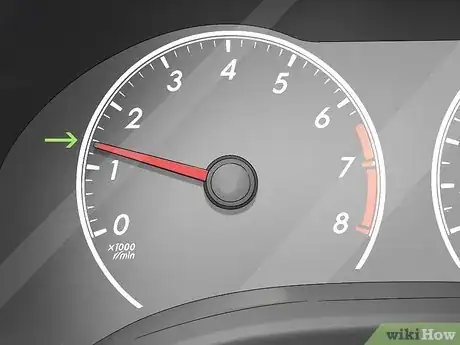
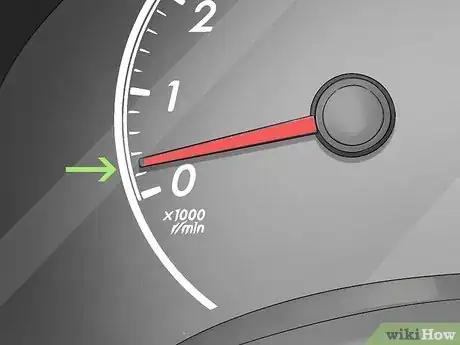
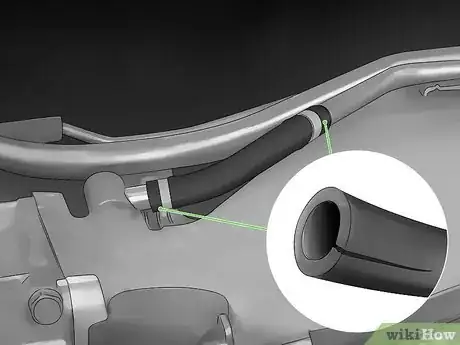
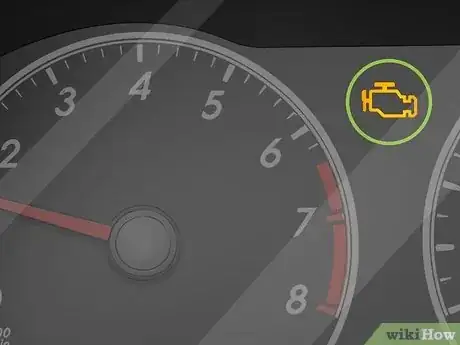

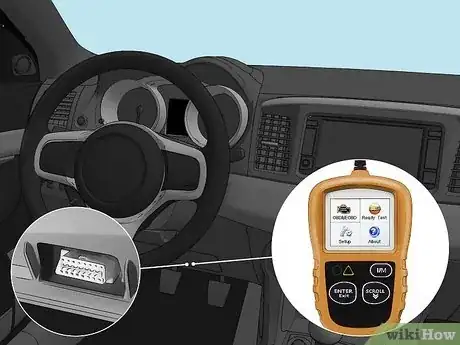
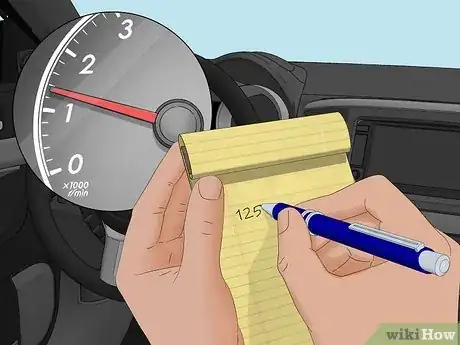
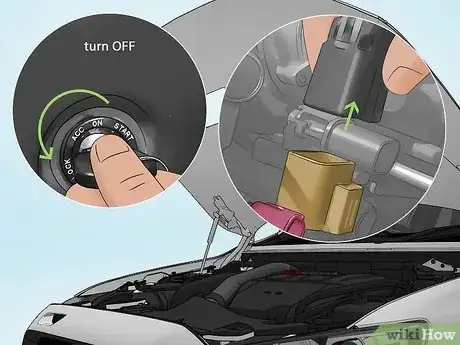
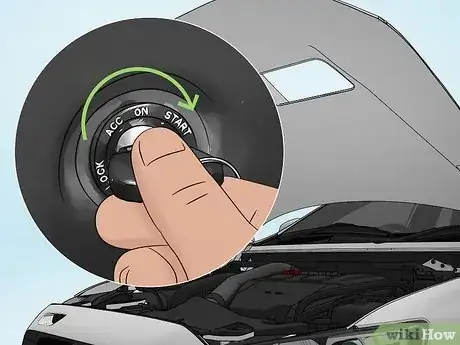
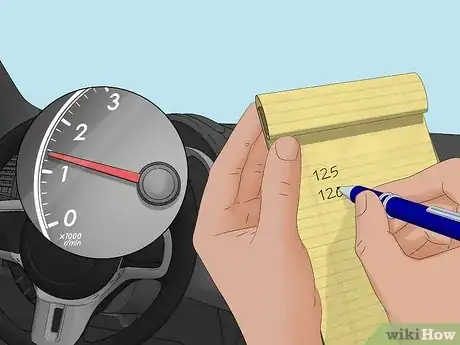
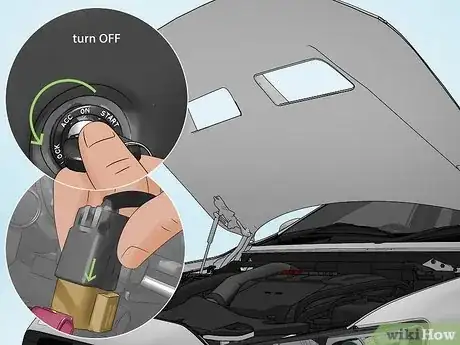
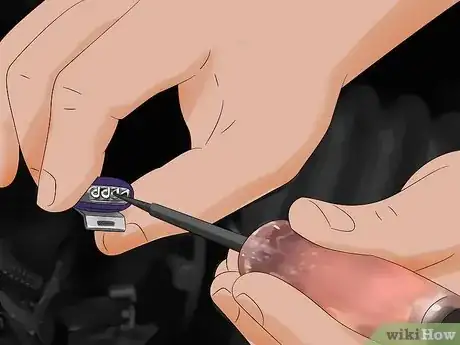
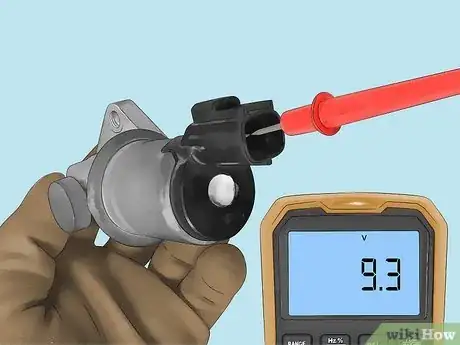
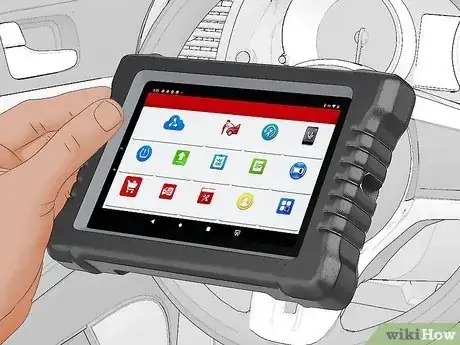
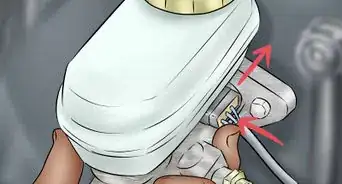

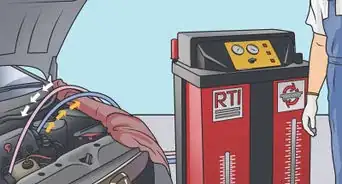

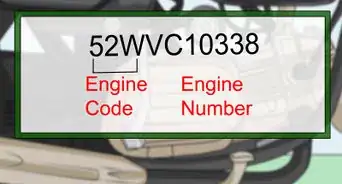
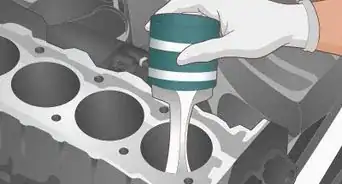

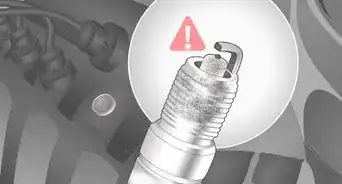
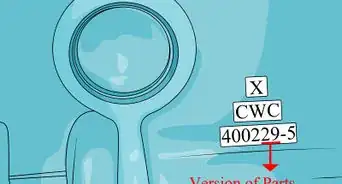
-Step-13.webp)
